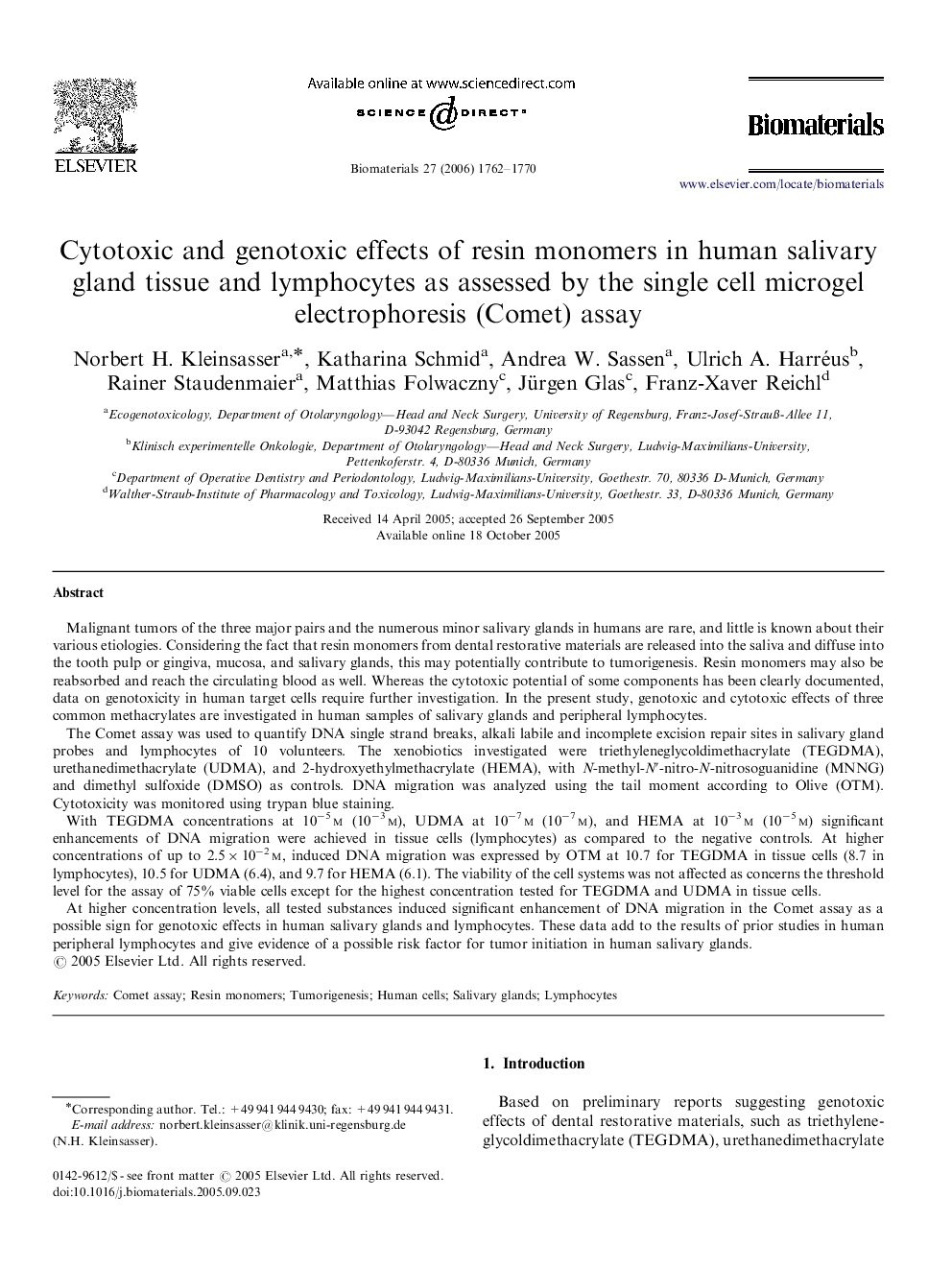| کد مقاله | کد نشریه | سال انتشار | مقاله انگلیسی | نسخه تمام متن |
|---|---|---|---|---|
| 10765 | 702 | 2006 | 9 صفحه PDF | دانلود رایگان |

Malignant tumors of the three major pairs and the numerous minor salivary glands in humans are rare, and little is known about their various etiologies. Considering the fact that resin monomers from dental restorative materials are released into the saliva and diffuse into the tooth pulp or gingiva, mucosa, and salivary glands, this may potentially contribute to tumorigenesis. Resin monomers may also be reabsorbed and reach the circulating blood as well. Whereas the cytotoxic potential of some components has been clearly documented, data on genotoxicity in human target cells require further investigation. In the present study, genotoxic and cytotoxic effects of three common methacrylates are investigated in human samples of salivary glands and peripheral lymphocytes.The Comet assay was used to quantify DNA single strand breaks, alkali labile and incomplete excision repair sites in salivary gland probes and lymphocytes of 10 volunteers. The xenobiotics investigated were triethyleneglycoldimethacrylate (TEGDMA), urethanedimethacrylate (UDMA), and 2-hydroxyethylmethacrylate (HEMA), with N-methyl-N′-nitro-N-nitrosoguanidine (MNNG) and dimethyl sulfoxide (DMSO) as controls. DNA migration was analyzed using the tail moment according to Olive (OTM). Cytotoxicity was monitored using trypan blue staining.With TEGDMA concentrations at 10−5 m (10−3 m), UDMA at 10−7 m (10−7 m), and HEMA at 10−3 m (10−5 m) significant enhancements of DNA migration were achieved in tissue cells (lymphocytes) as compared to the negative controls. At higher concentrations of up to 2.5×10−2 m, induced DNA migration was expressed by OTM at 10.7 for TEGDMA in tissue cells (8.7 in lymphocytes), 10.5 for UDMA (6.4), and 9.7 for HEMA (6.1). The viability of the cell systems was not affected as concerns the threshold level for the assay of 75% viable cells except for the highest concentration tested for TEGDMA and UDMA in tissue cells.At higher concentration levels, all tested substances induced significant enhancement of DNA migration in the Comet assay as a possible sign for genotoxic effects in human salivary glands and lymphocytes. These data add to the results of prior studies in human peripheral lymphocytes and give evidence of a possible risk factor for tumor initiation in human salivary glands.
Journal: Biomaterials - Volume 27, Issue 9, March 2006, Pages 1762–1770